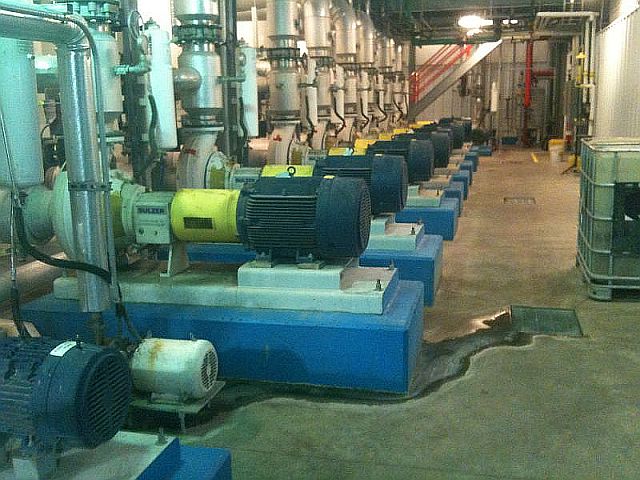There are numerous items to be considered when performing an initial inspection while setting up vibration analysis routes. All things from safety considerations to machine information, smells, and sounds need to be observed and documented.
Safety
The first and most important thing to consider when inspecting for a route is safety. Here are some safety hazards to look out for at machines and the surrounding area:
- Are there exposed shafts, sheaves, belts, or nip points?
- Does an oily or slippery floor condition exist?
- Leaking lubricants or products can be commonplace around rotating equipment.
- Steam can hide other safety hazards.
The bottom line is: be aware of your surroundings on the way to, from and while at your equipment.
Machine Information
The next consideration when building a route concerns the machine data that will be necessary for a complete and accurate analysis. Depending on the machine, there are many items to document when possible. While this can sometimes be extensive, this information is necessary when gathering data for an accurate analysis:
- Machine Configuration: Is it a simple machine direct couple to a pump or fan? A motor belt drive to pump or fan? Is there a gearbox? How many reductions does the gearbox have? Ratios? Is the machine vertical or horizontal? Is the pump/fan center hung or overhung? Flexible or rigid base, etc.
- Horsepower: What is the horsepower of the motor? Are the bearing numbers available? (Take a picture of the motor tag) Is the RPM fixed or variable speed?
- Machine History: When possible, research the past history of the machine. Is this a “problem child” machine? If so, what are the failure modes? Any information on MTBF? (Mean Time Between Failures)
- Machine Condition: Does the machine appear to be previously maintained? (This can be hard to determine in various environments) Any smells or sounds? Are belts squealing or burning? Does the machine “sound” good?
- Environment: Is the machine mounted on an elevated floor or mezzanine where vibration can be amplified or induced from nearby equipment?
- Other observations from visual inspections including using strobe light. Belt condition? Base condition? Any excessive movement in the shaft?
Always use common sense and collect as much information as possible. It is not always possible to get everything needed the first time through a machine setup but being aware of the endless possibilities is a great start.



